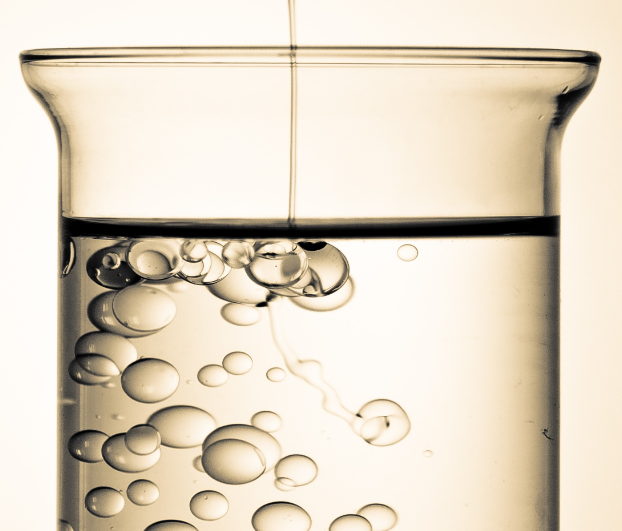Emulsifiers in Oil and Gas and Beyond
Their types and uses


An emulsion is a mixture of two or more liquids that are normally immiscible, such as oil and water. Emulsions can be either temporary or stable, depending on the nature of the mixture and the presence of certain agents called emulsifiers.
There are several different types of emulsions, including oil-in-water emulsions, where oil droplets are dispersed in a water-based solution, and water-in-oil emulsions, where water droplets are dispersed in an oil-based solution. Another type of emulsion, known as a Pickering emulsion, is stabilized by solid particles rather than a liquid emulsifier.
In the oil and gas industry, emulsions are commonly used to transport and store crude oil and other feedstocks. The stability of these emulsions is important in order to prevent the separation of the oil and water phases, which can cause operational problems and reduce the efficiency of the process.
Emulsifiers, also known as surfactants, are chemicals that are added to emulsions to improve their stability. These chemicals work by reducing the surface tension between the oil and water phases, which helps to prevent the droplets from coalescing and separating.
Wetting agents are also commonly used in emulsions to improve the wetting and spreading characteristics of the mixture. These chemicals help to distribute the droplets evenly throughout the emulsion, which improves its stability and overall performance.
Secondary emulsifiers are sometimes added to emulsions in order to enhance their stability and prevent the formation of larger droplets. These chemicals can help to maintain the small droplet size and prevent the emulsion from breaking down over time.
The stability of an emulsion is typically measured using various tests and techniques, such as sedimentation tests, stability measurements, and droplet size analysis. These tests help to determine the effectiveness of the emulsifiers and other chemicals used in the emulsion, and can provide valuable information for optimizing the emulsion formulation and performance.
In the oil and gas industry, drilling fluids are used to lubricate and cool the drill bit and to carry cuttings out of the well. These fluids typically contain emulsifiers and oil wetting agents, which help to improve the stability and performance of the fluid.
In the production of emulsifiers and oil wetting agents, various chemicals and feedstocks are commonly used.
Primary emulsifiers are typically made using chemicals such as fatty acids, fatty alcohols, and glycerol, which are derived from natural sources such as vegetable oils and animal fats. These chemicals are used to create the emulsifying agents that are added to emulsions to improve their stability.
Secondary emulsifiers are often made using chemicals such as polymers and copolymers, which are derived from synthetic sources such as petrochemicals. These chemicals are added to emulsions in order to enhance their stability and prevent the formation of larger droplets.
Oil wetting agents are typically made using chemicals such as alcohols, amines, and ethoxylates, which are derived from natural and synthetic sources. These chemicals are added to emulsions to improve their wetting and spreading characteristics, which helps to improve their stability and overall performance. Overall, a wide range of chemicals and feedstocks are used in the production of emulsifiers and oil wetting agents, which are essential for the effective formulation and performance of emulsions in various industries.
In addition to the oil and gas industry, emulsions and emulsifiers are commonly used in a variety of other industries, including food and beverage, pharmaceuticals, cosmetics, and cleaning products.
In the food and beverage industry, emulsions are commonly used to create products such as mayonnaise, salad dressings, and ice cream. These emulsions are typically stabilized by emulsifiers such as lecithin and mono- and diglycerides, which help to prevent the separation of the oil and water phases.
In the pharmaceutical industry, emulsions are used to deliver drugs and other active ingredients to the body. These emulsions are typically made using emulsifiers such as polysorbates and polyethylene glycol, which help to improve the stability and performance of the emulsion.
In the cosmetics industry, emulsions are commonly used in products such as lotions and creams. These emulsions are typically stabilized by emulsifiers such as cetyl alcohol and stearyl alcohol, which help to improve the consistency and texture of the product.
In the cleaning products industry, emulsions are used in products such as detergents and degreasers. These emulsions are typically stabilized by emulsifiers such as sodium lauryl sulfate and sodium dodecyl benzene sulfonate, which help to improve the cleaning and emulsifying properties of the product.
Overall, emulsifiers are important chemicals used in various industries, including the oil and gas industry, to improve the stability and performance of emulsions. These chemicals play a crucial role in enabling the effective transport and storage of feedstocks, and are essential for maintaining the efficiency and effectiveness of various processes and operations.